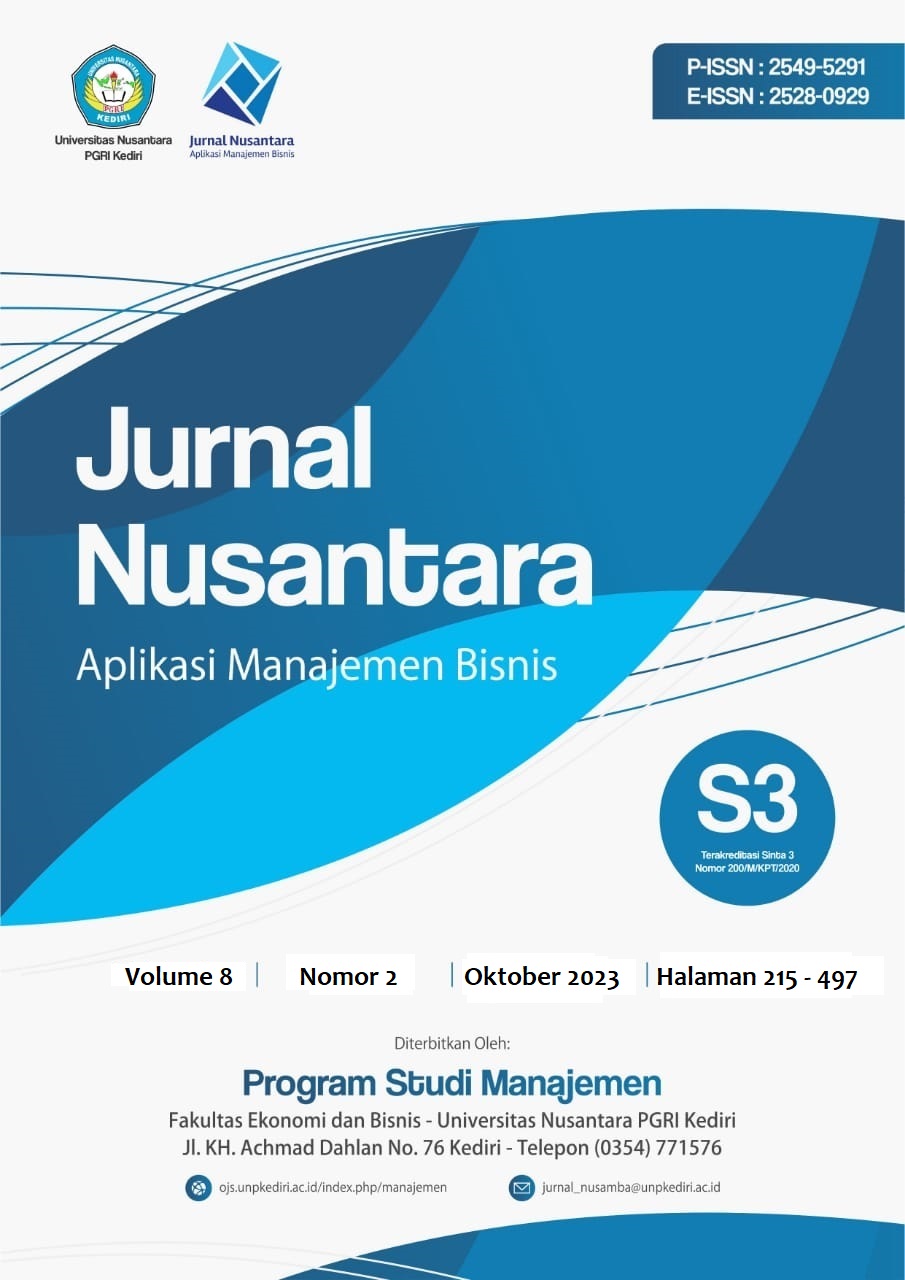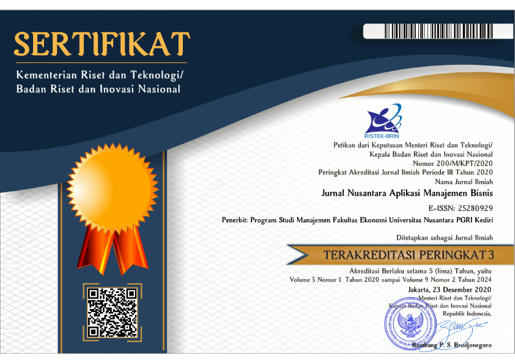Rantai Nilai, Corporate Farming Dan Nilai Tambah Komoditas Kopi Kabupaten Temanggung
DOI:
https://doi.org/10.29407/nusamba.v8i2.18561Keywords:
Value Chain, Corporate Farming, Value Added, Coffe CommodityAbstract
D
Research aim: To analyze the coffee commodity value chain and (b) to analyze the opportunities and challenges of implementing coffee commodity corporate farming in Temanggung Regency
Design/Methode/Approach: Data were obtained through interviews with several farmers, direct observations in the field, and FGDs involving the Temanggung Regency government apparatus related to the development of coffee commodities. Data are analyzed in narrative form, value chain analysis, and corporate farming model
Research Finding: The study results show that the coffee commodity value chain in Temanggung Regency consists of input, production, collection, processing, and marketing or distribution to consumers. Each of these chains has its problems, from the smooth supply of inputs and production prices, land ownership, and picking/harvesting coffee cherries that do not meet quality standards to coffee marketing. From the results of the FGD, it was also revealed that corporate farming has the opportunity to be applied to deal with the problem of coffee commodities so that it is expected to create higher added value which will be enjoyed by the farmers of Temanggung Regency
Theoretical contribution/Originality: This study integrates value chain analysis with the corporate farming model, which has not been the concern of previous researchers
Practitioner/Policy implication: This study offers policy proposals to the Temanggung Regional Government regarding the formation of corporate farming so that it can run effectively
Research limitation: Not yet analyzed based on a quantitative approach, especially related to feasibility aspects.
Downloads
References
Porter ME. Competitive Advantage – Creating a Sustaining Superior Performance,. 1985.
Hellin J, Meijer M. Guidelines for value chain analysis, Food and Agriculture Organization (FAO). UN Agric Dev Econ Div November 2006.
Chivanka R. Strategic cost management: value chain analysis approach. Account SA 2007;August:24–7.
Shank JK, Govindarajan V. Strategic Cost Management and the Value Chain. 2000.
Zamora E. Value Chain Analysis: A Brief Review. Asian J Innov Policy 2016;5:116–28. https://doi.org/http//dx.doi.org/10.7545/ajip.2016.5.2.116.
Strickland A. TJ. GA. PA. Crafting and Executing Strategy:The Quest for Competitive Advantage Concepts and Cases, 23rd. 2021.
T.I Noor, P Pardian, A Nugraha. Analaisis Rantai Nilai (Value Chain) Bawang Merah. AGRICORE-Jurnal Agribisnis Dan Sos Ekon Pertan 2016;1:1–94.
Darwanto. EWJ. Analisis Rantai Nilai (Value Chain) Jagung di Kecamatan Toroh Kabupaten Grobogan . J Penelit Ekon Dan Bisnis 2016;1:1–15.
M Hartati N Siregar S. Silvia. Analisis value chain dan model business pada industri pengolahan dodol salak (Studi kasus: UD. Salacca Tapanuli Selatan). eminar Nasional.Teknologi Informasi, Komunikasi. dan Ind., 2018, p. 2579–5406.
Irham PPJJI. Farmers’ Willingness to Continue Corporate Farming Programs in Jetis Subdistrict, Bantul Regency, Yogyakarta. Agro Ekon 2020;31.
Kurnia G. Petani: Pejuang yang Terpinggirkan. 2004.
Kumar P. SCKCP. Corporate Farming vis-avis Contract Farming in India : A Critical Perspective. Int J Manag Soc Sci Res 2012;1:60–70.
Dinas Pertanian. Panduan Rice Estate and Corporate Farming. 2000.
Dalimunthe IM, Kurnia G. Prospek Penerapan Sistem Corporate Farming (Studi Kasus di Koperasi Pertanian Gerbang Emas). J AGRISEP 2018;17:11–22. https://doi.org/10.31186/jagrisep.17.1.11-22.
Downloads
Published
Issue
Section
License
Authors who publish with this journal agree to the following terms:
- Copyright on any article is retained by the author(s).
- The author grants the journal, the right of first publication with the work simultaneously licensed under a Creative Commons Attribution License that allows others to share the work with an acknowledgment of the work’s authorship and initial publication in this journal.
- Authors are able to enter into separate, additional contractual arrangements for the non-exclusive distribution of the journal’s published version of the work (e.g., post it to an institutional repository or publish it in a book), with an acknowledgment of its initial publication in this journal.
- Authors are permitted and encouraged to post their work online (e.g., in institutional repositories or on their website) prior to and during the submission process, as it can lead to productive exchanges, as well as earlier and greater citation of published work.
- The article and any associated published material is distributed under the Creative Commons Attribution-ShareAlike 4.0 International License












